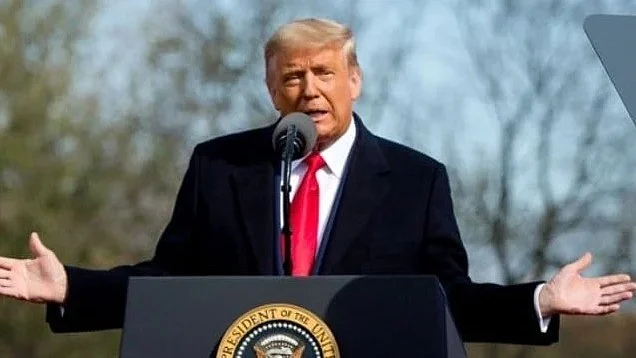
US President Donald Trump
Credit: X@realDonaldTrump
New Delhi: Sweeping new tariffs, including 25% on India, unleashed by US President Donald Trump will cost average American households $2,400 in the short-term due to increased prices, SBI Research said on Friday.
It said the negative impact of the higher tariffs will be more on the US than India and other countries. Trump’s move is likely to lead to deceleration in America’s economic growth, higher inflation and weakening in dollar.
The impact will be higher on the low-income American families. “Low-income families may lose around $1,300 nearly triple the relative burden compared to high earners while high-income households could face losses of up to $5,000, though with less impact on their overall financial stability,” the research paper authored by SBI Group Chief Economic Adviser Soumya Kanti Ghosh noted.
The US has announced imposition of new levies ranging from 10% to 41% on around 70 countries. As per an executive order released by the White House, India will face a 25% new tariff, effective from August 7.
“Imposition of 25% tariff on India with penalty is a bad business decision but the mysterious forces of the global supply chain should auto adjust and cushion the impact,” SBI Research said.
“Not surprisingly US GDP, inflation and currency face greater risk of downgrades compared to India,” it said.
It said the high tariffs will spiral inflationary pressure in the world’s largest economy as roughly 20% of the US consumer price index is sensitive to import costs.
“The US is beginning to show signs of renewed inflationary pressure, driven by the pass-through effects of recent tariffs and a weaker dollar—particularly in import-sensitive sectors such as electronics, autos, and consumer durables,” SBI Research said.
US inflation is expected to stay above the 2% target through 2026, driven by supply-side effects of tariffs and exchange rate movements, it added.
According to BMI, a unit of Fitch Solutions, the 25% tariff on India, when it comes into effect, will raise the US effective tariff rate on India to 20.7%, up from the current 11.7%. This is likely to bring down India’s GDP growth by 0.2 to 0.3%.
However, the bigger risk lies in the potential tariffs on pharmaceutical products, which make up around 14% of India’s exports to the US. Trump has threatened tariffs of up to 200% on pharmaceuticals. If implemented, it will significantly increase US effective tariff rate on India further, with a more serious impact on growth, BMI said.
“We think that any immediate impact from Trump’s latest announcements may be on US-India relations. The president appears frustrated with the progress of trade talks and India’s ties with Russia,” BMI said.
This risks further cooling bilateral relations, especially after India dismissed Trump’s claim that he had mediated peace between India and Pakistan. Nonetheless, India remains a strategic partner for the US and stands to benefit from opening up its large market. We therefore believe there is a path forward and expect India will eventually secure a relatively favourable deal, it added.